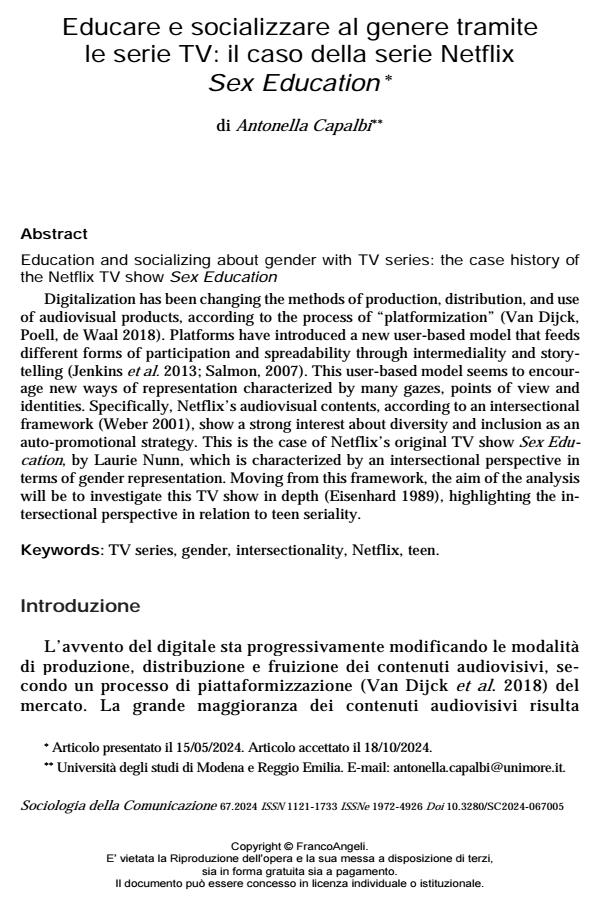Educare e socializzare al genere tramite le serie TV: il caso della serie Netflix Sex Education
Titolo Rivista SOCIOLOGIA DELLA COMUNICAZIONE
Autori/Curatori Antonella Capalbi
Anno di pubblicazione 2025 Fascicolo 2024/67
Lingua Italiano Numero pagine 13 P. 78-93 Dimensione file 145 KB
DOI 10.3280/SC2024-067005
Il DOI è il codice a barre della proprietà intellettuale: per saperne di più
clicca qui
Qui sotto puoi vedere in anteprima la prima pagina di questo articolo.
Se questo articolo ti interessa, lo puoi acquistare (e scaricare in formato pdf) seguendo le facili indicazioni per acquistare il download credit. Acquista Download Credits per scaricare questo Articolo in formato PDF

FrancoAngeli è membro della Publishers International Linking Association, Inc (PILA)associazione indipendente e non profit per facilitare (attraverso i servizi tecnologici implementati da CrossRef.org) l’accesso degli studiosi ai contenuti digitali nelle pubblicazioni professionali e scientifiche
Digitalization has been changing the methods of production, distribution, and use of audiovisual products, according to the process of “platformization” (Van Dijck, Poell, de Waal 2018). Platforms have introduced a new user-based model that feeds different forms of participation and spreadability through intermediality and storytelling (Jenkins et al. 2013; Salmon, 2007). This user-based model seems to encourage new ways of representation characterized by many gazes, points of view and identities. Specifically, Netflix’s audiovisual contents, according to an intersectional framework (Weber 2001), show a strong interest about diversity and inclusion as an auto-promotional strategy. This is the case of Netflix’s original TV show Sex Education, by Laurie Nunn, which is characterized by an intersectional perspective in terms of gender representation. Moving from this framework, the aim of the analysis will be to investigate this TV show in depth (Eisenhard 1989), highlighting the intersectional perspective in relation to teen seriality.
Parole chiave:TV series, gender, intersectionality, Netflix, teen
Antonella Capalbi, Educare e socializzare al genere tramite le serie TV: il caso della serie Netflix Sex Education in "SOCIOLOGIA DELLA COMUNICAZIONE " 67/2024, pp 78-93, DOI: 10.3280/SC2024-067005